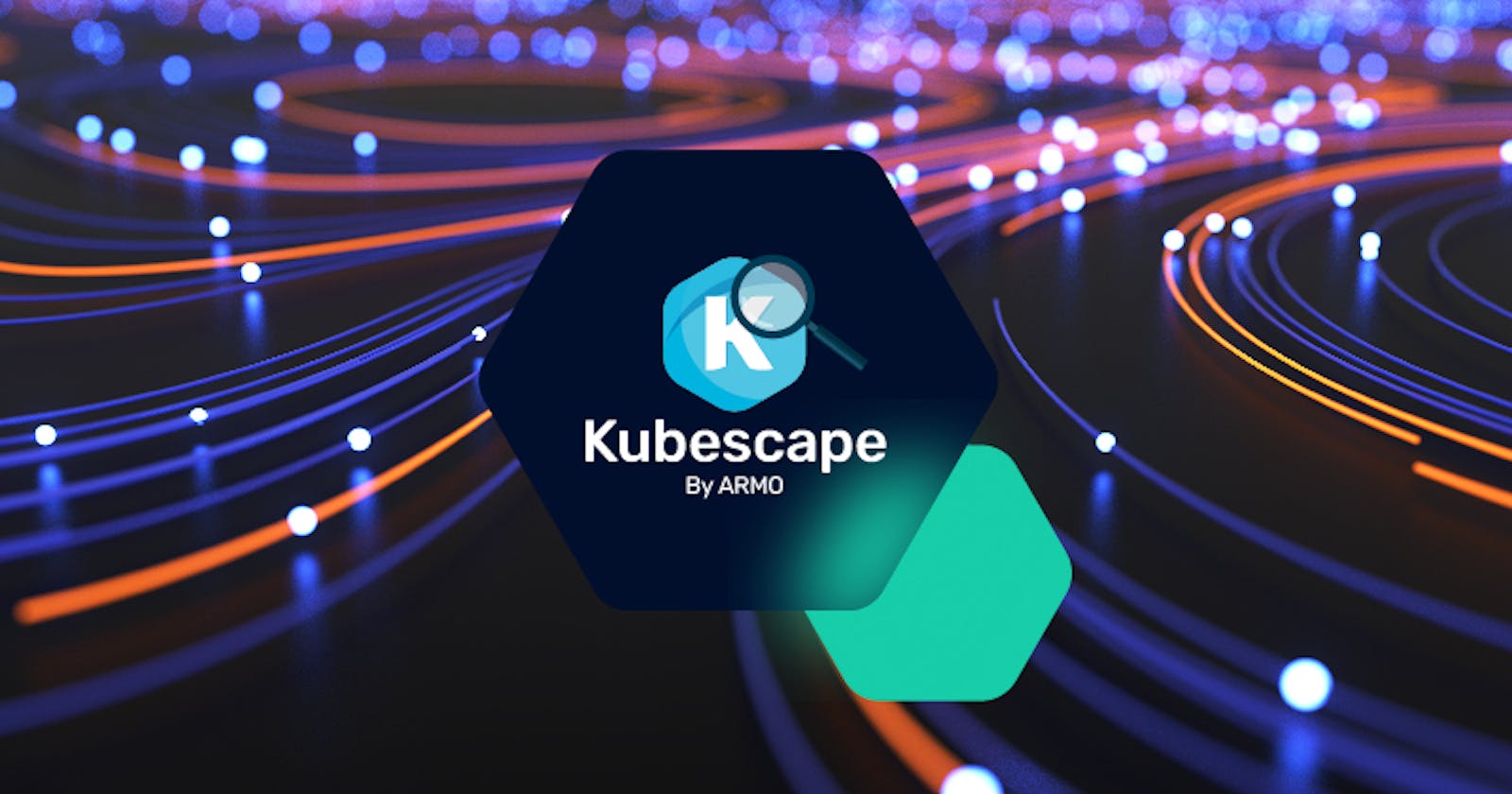Kubescape case study
4 min read

Kubernetes is considered the new cloud-native operating system and is used by millions of developers worldwide. Now that so many big companies are using Kubernetes to deploy mission-critical applications, it will naturally be a target for potential attacks.
What are the challenges with Kubernetes Security?
Securing Kubernetes is no easy task, and ignoring it is not an option either. Having security vulnerabilities puts your cluster and all of its data at risk. Your clusters might even accidentally (or intentionally) get deleted. Attackers could steal sensitive user data, etc. The critical thing to note is that security is essential.
When we talk about Kubernetes security, the common vulnerabilities boil down to container vulnerabilities, faulty RBAC settings, and misconfiguration.
- Container Vulnerability: Containers are created using static code, which can have some vulnerabilities. Container security is essential because the container image contains all the components that will eventually run your application. If vulnerabilities are lurking in the container image, the risk and potential severity of security issues during production increases.
- Faulty RBAC: Setting up RBAC is a great way to prevent users from accessing your clusters unless needed. This, however, can also have its downside. For example, without a tool such as permit.io, setting up RBAC can be difficult, and you may often set the wrong permissions. Or an employee who has left the company might still have access to your production clusters.
- Misconfigurations: Kubernetes Misconfigurations are where most vulnerabilities arise. Your configuration files, either YAML or Helm, could be hundreds, if not thousands of lines. While creating or editing such large files, you might inevitably misconfigure something.
What is Kubescape?
Kubescape is an open source project by ARMO which is a Kubernetes Security tool with a ton of features including risk analysis, RBAC visualizer, a multi-cloud single pane of glass view of all your clusters, container image scanning and more!

This one platform provides many useful features to keep your manifest files, code repositories, container registries, and clusters secure. It is one of the fastest-growing K8S security compliance solutions among developers. You can run Kubescape scans from the CLI and see the results either in the CLI itself or on the web dashboard.
Kubescape scans your K8S clusters, YAML files, Helm charts, code repositories, container image registries, workers nodes, and APIs servers and detects misconfigurations by multiple hardening guidelines such as NSA-CISA, MITRE ATT&CK and more. This information can then be viewed in the web dashboard, and you can get risk analysis score and detailed information about what aspect of your clusters cause security issues and possible fixes.

Kubescape also has container image scanning functionalities which can be used to secure your application's container images or check the security of images found on DockerHub and other image registries.
Kubescape also provides a handy tool, the RBAC visualizer and investigator. When you have hundreds or thousands of authorized users and third-party applications running in your clusters, it can get challenging to pinpoint who or what did a specific action.

Kubescape provides an RBAC visualizer that makes this task very easy. Instead of typing in hundreds of kubectl commands, you can enter simple search queries on the Kubescape cloud application (cloud.armosec.io) and get a visual representation of your cluster's roles and roles access.
What makes it Unique?
Kubescape is the only product that scans your K8S manifest files, API server settings, and Worker node settings across your entire development lifecycle and CICD pipeline.
Kubescape has the largest, widest, and deepest K8s security frameworks and tests from one solution - over 100 different K8s-specific controls.
Kubescape is the only open source single-pane-of-glass K8s security product that looks at your K8s in a holistic view - security compliance, risk scoring, misconfigurations, vulnerabilities scanning, and RBAC.
It is the only product that visualizes RBAC and enables you to investigate RBAC, ask smart questions, and get helpful insight.
It is easy to get started with and can embed security natively into your CI/CD.
Who should be using Kubescape?
If you are a K8S user, admin, or are involved in a DevSecOps role, Kubescape can help you keep your Kubernetes clusters secure and prevent downtimes due to security attacks.
Conclusion
Kubescape is a robust platform that provides you with a ton of features that can keep your clusters secure. It provides potential fixes for any vulnerability it finds and gives a visualized RBAC to ensure permissions are not misconfigured.
Get involved
- Connect Kubescape to your clusters and try out its features.
- Join the Kubescape Discord Community.
- Contribute to Kubescape on GitHub.
- Learn about Kubernetes security and best practices with hundreds of blog posts.